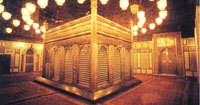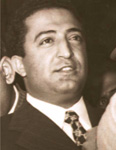
Yemeni Unification: Between dream and reality [Archives:2008/1157/Reportage]
May 22 2008
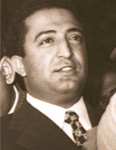 |
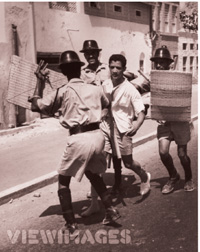 |
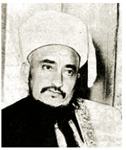 |
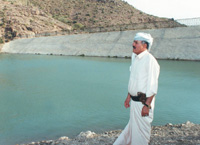 |
For the Yemen Times
Yemen has been long known as Arabia Felix (Fortunate Arabia) and as a place with deep-rooted culture and traditions. Its unification was the strategic goal of the September 26th and October 14th revolutions. Northern and southern Yemen went through various stages before they were unified in 1990.
The British forces occupied the port city of Aden, southern Yemen, in 1839. Meanwhile, Ottomans occupied Sana'a in 1849 and battles between Yemenis and Ottoman soldiers continued for 62 years in the north. In 1911, a peace agreement was signed between Imam Yahya Hamid Al-Din and Ottomans, who eventually lost the war.
After this, Yemen was divided into southern and northern parts, with borders separating the two areas. The British forces expanded their occupation into the western provinces of the southern part of the country. They signed agreements with tribal Sheikhs there, which resulted in the existence of what was known as the Aden western protectorates.
Imam Yahya ruled the northern part of Yemen, and his son, Ahmed, succeeded him. Their reign was known as a dark time for Yemen, due to the spread of illiteracy and backwardness. A number of attempts were made to overcome their rules. On September 26, 1962, a number of revolutionaries defeated the Imamate rule and announced the beginning of republican -style governance. The northern part was then known as the Yemen Arab Republic, while the southern part was known as People's Democratic Republic of Yemen.
Imamate rule:
Al-Mutawakkilite Yemeni Kingdom was established after World War I in 1918 in northern Yemen, as an independent country that was internationally recognized with Imam Yahya Mohammed Al-Mansour Hamid Al-Din as its ruler. In 1923, it got independence from the Ottomans and was recognized by the League of Nations, the predecessor to the United Nations.
Imam Yahya's reign was characterized by fighting over power and in 1948 he was assassinated and succeeded by his son, Imam Ahmed. While Imam Ahmed was in Italy in 1959, tribal sheikhs tried to start a rebellion against him but he succeeded in repressing them. He was injured during the rebellion. Imam Ahmed died on September 19th, 1962, and was succeeded by his son, Mohammed Al-Badr, who remained in power only for eight days. A number of army officers staged a coup and announced the revolution on September 26, 1962. Abdullah Al-Sallal was the first president of the Yemen Arab Republic. The fighting did not calm down after the September revolution as there were still people who supported Imamate rule.
Clashes broke out between the republicans, who were supported by Egypt, and the monarchists (those who backed the Imam), who were supported by the Saudi Kingdom. Clashes continued until the Egyptian forces left Yemen in 1967. Thousands of Egyptian soldiers were killed by the monarchists. After the withdrawal of Egyptian forces, a number of army officers and tribal sheikhs staged a coup against Al-Sallal. Abdul-Rahman Al-Eryani was appointed president of the country.
Fighting between republicans and monarchists continued until 1969. In a peace agreement brokered between the two warring sides, monarchists were appointed in the government and the Parliament.
In 1974, another coup was staged against Al-Eryani, and Ibrahim Al-Hamdi was appointed president of the country. Three years later, Al-Hamdi was assassinated and Ahmed Hussein Al-Ghashmi took the power. Al-Ghashmi remained in power only for one year before he too was assassinated.
Ali Abdullah Saleh was appointed president instead. He has been the president of the Republic of Yemen since that time.
Former southern Yemen:
British influence increased in the southern and eastern portion of Yemen after the British captured the port of Aden in 1839. It was ruled as part of British India until 1937, when Aden was made a crown colony with the remaining land designated as East Aden and West Aden protectorates. By 1965, most of the tribal states within the protectorates and the Aden colony proper had joined to form the British-sponsored federation of south Arabia.
In 1965, two rival nationalist groups)the Front for the Liberation of Occupied South Yemen (FLOSY) and the National Liberation Front (NLF))turned to terrorism in their struggle to control the country.
In 1967, in the face of uncontrollable violence, British troops began withdrawing, the federation rule collapsed, and NLF elements took control of the territory after eliminating their FLOSY rivals. South Arabia, including Aden, was declared independent on November 30, 1967, and was renamed the People's Republic of South Yemen.
In June 1969, a radical wing of the Marxist NLF gained power and changed the country's name on December 1, 1970, to the People's Democratic Republic of Yemen (PDRY). In the PDRY, all political parties were amalgamated into the Yemeni Socialist Party (YSP), which became the only legal party. The PDRY established close ties with the Soviet Union, China, Cuba, and radical Palestinian factions.
Tension between south and north
Tensions between two parts began in 1972 and a war broke out soon after but did not last long. The two sides agreed to a ceasefire one month later on November 28, 1972. The two sides signed an agreement known as the Tripoli Agreement, which stipulated, “Establishing one country in Yemen, with Sana'a as its capital.”
Despite that progress, fighting renewed in February 1979. Thousands were killed from both sides. In March 1979, Ali Abdullah Saleh (President of the Yemen Arab Republic) and Ali Nasser Mohammed (President of the People's Democratic Republic of Yemen) met in Kuwait and agreed to stop the fighting. A statement resulting from the meeting said that a constitutional committee was to prepare a constitution for a unified country within four months; unification didn't actually occur until 11 years after this.
Progress towards unification
Fighting didn't break out after that, and between 1980 and 1986 the leaders of the two countries met in Sana'a and Aden to talk about achieving unification.
The two countries agreed to establish a joint council known as the Yemeni Council in 1981. The new council was tasked with the following responsibilities:
– Following up the progress in achieving the unification between the two countries.
– Issuing orders for the officials responsible for implementing joint projects in the two countries.
– Meeting once every six months and whenever the need arises.
– Meeting in one of the two countries' capital cities.
– Establishing a joint ministerial committee to be to be formed from specific ministries from the two countries. The ministries included the Ministry of Education, Interior, Foreign Affairs and Planning, in addition to the General Authority for Armed Forces.
On May 4, 1988, Ali Abdullah Saleh (President of northern Yemen) and Ali Salem Al-Beidh, (Secretary General of the YSP's Central Committee) met in Sana'a and agreed on points including establishing a joint investment project between the governorates of Marib and Shabwa over an area stretching 2,200 square kilometers and following up the procedures to achieve unification.
Meanwhile, another agreement was signed to facilitate people's movement between the two countries. This was enforced by replacing all single-nation checkpoints and making them joint checkpoints and allowing citizens to move between them freely by showing identification.
Taiz Meeting
On March 2, 1990, the prime ministers of the two parts, Abdul-Aziz Abdul Ghani (north) and Yassin Saeed Noaman (south) met in Taiz and agreed to first integrate institutions and interests such as:
1- Official press agencies
2- Radio and television stations
3- Post, telephone and telecommunications corporations
4- General Authority for Meteorology and Aviation
5- General Tourism Corporation
6- Customs Authority
7- Taxes Authority
8- General Authority for Ports and Marine Affairs
9- Central Bank
10- Airways companies (Yemenia and Yamda)
Final procedures
For the first time, Sana'a city witnessed a meeting that included all the leaders of the northern and southern parts of Yemen. These included the leaders Ali Abdullah Saleh (President of northern Yemen), Ali Salem Al-Beidh (Secretary-general of the YSP's Central Committee in southern Yemen). The meeting was held between April 19 and 22 in 1990. The two sides agreed on:
Article 1-On May 22, 1990, the Yemen Arab Republic and the People's Democratic Republic of Yemen are to be fully unified into one country named the Republic of Yemen, which will have legislative, executive and judicial powers.
Article 2- After implementing this agreement, a presidential council is to be set up during the interim period. The council is to include five people who will elect one person from among themselves to be the chairman of the presidential council and another one his vice during the first meeting. The Presidential Council is to be formed through election to be held by the Authority of the Presidential People's Council and the Consultative Council.
Article 3-The interim period continues for two years and six months, starting from the effectiveness of this agreement. During this period, the Parliament is to be formed from the Shura Council members and Higher People's Council, in addition to 31 members to be appointed by the Presidential Council.
Article 4-In its first meeting, the Presidential Council is to issue a decree to form a consultative council for itself, which will include 45 members.
Article 5- The Presidential Council is to form the government of the Republic of Yemen, which will undertake all the responsibilities authorized to it according to the constitution.
Article 6-The Presidential Council, in its first meeting, is to appoint a technical team to present ideas on reconsidering the administrative division of the country.
Article 7- The Presidential Council is to be authorized to issue decisions that are as effective as the constitution with regard to the country's symbol, flag, and national anthem. Additionally, the Presidential Council, in its first meeting, is to invite the Parliament in order to consider the following:
A- Ratifying the decisions through law that the Presidential Council has taken.
B-Granting the Presidential Council's confidence to the government in the light of the statement it [the government] will present.
C- Asking the Presidential Council to ready the constitution for a public vote before November 30, 1990.
Article 8- This agreement becomes effective as soon as it is approved, as well as after the approval of the constitution, by the Shura Council and Parliament.
Article 9-This agreement is regarded as an organizer for the whole interim period, and the constitution's articles are to be effective during the interim period as soon as the agreement is approved.
Article 10-Approving this agreement and the constitution means cancelling the previous constitutions of the two countries.
This agreement was signed in Sana'a on April 22, 1990 by Brigadier Ali Abdullah Saleh, President of the Yemen Arab Republic and Ali Salem Al-Beidh, secretary general of the Yemeni Socialist Party's Central Committee.
Yemenis' dream came true and Yemen began a new history when the unification was achieved on May 22, 1990 in Sana'a city. It was the new Yemen, now called the Republic of Yemen, one country, with Saudi Arabia bordering it in the north, the Red Sea in the west, Sultanate of Oman in east and the Arabian Gulf in south. Millions of people celebrated that great achievement, and that particular day has become Yemen's national day since then.
The first government after the unification, May 24, 1990 to May 29, 1993:
– Haidar Abu Bakr Al-Attas, Prime Minister
– Hassan Makki, Prime Minister's first deputy
– Abdullah Hussein Al-Kurshumi, Minister of Reconstruction
– Abdul-Karim Al-Eryani, Minister of Foreign Affairs
– Saleh Munasser, Minister of Immigrant Affairs
– Mohammed Saeed Al-Attar, Minister of Industry
– Saleh Abu Bakr Bin Husainoon, Minister of Oil and Mineral Wealth
– Fadhl Muhsen Abdullah, Minister of Trade
– Mohammed Saeed Abdullah, Minister of Local Administration
– Abdul-Wahhab Mahmoud, Minister of Electricity and Water
– Abdul-Aziz Al-Dali, Minister of State for Foreign Affairs
– Mohammed Al-Khadem Al-Wajeeh, Minister of Civil Service and Administrative Reform
– Yahya Al-Arashi, Minister of State for Cabinet Affairs
– Faraj Bin Ghanem, Minister of Planning and Development
– Ahmed Mohammed Al-Anesi, Minister of Telecommunications
– Ismael Al-Wazeer, Minister of Legal Affairs
– Mohsen Al-Ulofi, Minister of Endowments and Guidance
– Ahmed Mohammed Luqman, Minister of Insurance and Social Affairs
– Hassan Al-Lawzi, Minister of Culture
– Mohammed Ahmed Al-Kabab, Minister of Youth and Sports
– Mohammed Abdullah Al-Jaifi, Minister of Education
– Abdul-Salam Sallam, Minister of Justice
– Mohammed Ahmed Jarhoum, Minister of Information
– Saleh Abdullah Muthanna, Minister of Transportation
– Salem Mohammed Jubran, Minister of Fishery Wealth
– Abdul-Qawi Muthana Hadi, Minister of Population and Urban Planning
– Alawi Saleh Al-Salami, Minister of Finance
– Muhsen Al-Hamadani, Minister of State
– Mohammed Ali Muqbil, Minister of Health.
– Sadeq Ameen Abu Raas, Minister of Agriculture and Water Resources
– Mahmoud Abdullah Al-Arasi, Minister of Tourism
– Ghaleb Mutaher Al-Qamesh, Minister of the Interior
– Hiatham Qassim Taher, Minister of Defense
– Abdul-Rahman Dhaiban, Minister of Labor and Vocational Training
– Ahmed Salem Al-Qadhi, Minister of Higher Education and Research
——
[archive-e:1157-v:18-y:2008-d:2008-05-22-p:report]


